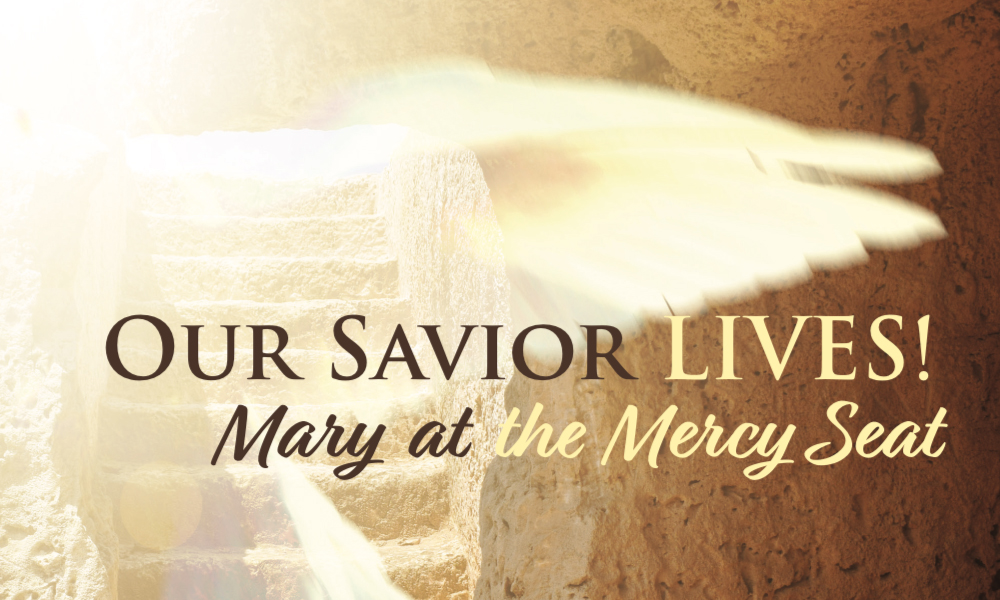Mary Magdalene received the honor of being the first person the Lord appeared to after His resurrection.
She was one of the women who followed the Lord Jesus as he went about His itinerant ministry. These women ministered to the Lord and His disciples out of their own substance (Lk. 8:3). Though Christ performed miracles to feed others, He depended upon others to feed Him, especially the sisters who travelled with Him. Most of the time, they remained in the background. But this did not mean they were unimportant or unappreciated by the Lord.
Several Marys are mentioned in the gospels. Mary Magdalene was the one of whom the Lord cast out seven demons (Lk. 8:2). She together with the other ladies accompanied the Lord to Jerusalem, indeed to the very end. At least four Marys were present at the crucifixion: Mary the mother of the Lord; Mary the wife of Cleopas; Mary the mother of James; and Mary Magdalene (Mt. 27:56; Jn. 19:25).
On resurrection morning, the ladies informed the disciples about the empty tomb which led Peter and John to run to the tomb. John being younger, outran Peter. Though arriving first, he remained outside. The huge stone was rolled away, not for the Lord’s benefit but for their benefit and ours so that we can know that it was empty. Peter went in first and then John. They then went “home”. But Mary Magdalene lingered on. She was distraught and downcast not finding the body to anoint for she and the other ladies had come with prepared spices. But did she have reason to weep? She would have had real reason to weep if she had found the dead body of the Lord Jesus! She and all of us would be of all people most miserable (1 Cor. 15:19).
She stooped and looked into the tomb. Why did Mary look into the tomb again? To make doubly sure? Her devotion and love of the Lord was stronger than the rational mind. Then she saw two angels, one at the head and at the foot of where the Lord’s body had lain. The angels were there previously but hidden from their eyes. Oftentimes we fail to see and therefore miss the invisible things of God (Heb. 1:14).
They asked, “Why weepest thou?” She answered, “Because they have taken away my Lord and I know not where they have laid Him.” She turned back and saw the Lord standing there but did not recognize Him. Her heart was still grief-stricken and would not be satisfied until she found her Lord. No one else could fill that longing in her heart. Not even mighty angels.
Now, the Lord Himself asked her, “Woman, why weepest thou? Whom seekest thou?” Mary “supposing Him to be the gardener” asked if He had removed Him, and said she would take the body away. How could she, a woman, be strong enough to carry the body of the Lord away, we may rationally ask? Her heart was obviously stronger than her body. She just made the proposal in faith. Her statement showed the condition of her longing heart and thus demonstrated her love for the Lord. Perhaps this explains a great deal why the Lord appeared to her first. Why did Mary not recognize the Lord at first? Sometimes we do not see or recognize the Divine because we are not expecting to see anything.
Then the Lord called her name, “Mary.” Knowing His voice she instantly recognized Him. That’s how it will be when we eventually meet our Lord. How will we recognize Him Whom we have never met? He will call us by our name for the Good Shepherd, knows us individually (Jn. 10:3). We shall hear His voice and see the print of the nails in His hands (Jn. 10:4, 16, 27; 20:24-29; Lk. 24:40).1 What a blissful moment that will be for each of us when we meet Him for the first time either in death or the rapture. Her tears turning to joy, she now clung to Him and would not want to let Him go (Jn. 20:17). The Lord certainly can be touched and later wanted to be touched by Thomas (Jn. 20:27).
It is significant that the Lord chose to appear first to Mary who lingered at the empty sepulcher. She would not give up in a seemingly hopeless situation. Her tears told the depth of her loss. The Lord knew what was in Mary’s heart. Yes, He knows every thought, emotion and word in us even before we utter or express our feelings (Ps. 139:1-4). Why then did the Lord not immediately reveal Himself to her? Because, He wanted to hear Mary express what she said.2
Let us pause for a moment here and study the scene. What a heavenly sight it was. Two angels, one on each side where the body had been. Does not this remind us of the type of the mercy seat in the Tabernacle? Is this not the fulfillment of the mercy seat which foreshadowed the reality which had just happened when Mary met the risen Lord at, what until that moment, was just a sepulcher? Mary was now in the holiest of all with her risen Lord.3
Mary was looking earnestly with a broken heart for her Lord and could not find Him. Her stream of tears told the story of her grief. Recall the words to Moses: “And there I will meet with thee, and I will commune with thee from above the Mercy-seat, from between the two cherubim, which are upon the Ark of the testimony.” (Ex. 25:22) In the immediate context of Exodus, these words were spoken to Moses and the Israelites. Prophetically they were spoken to Mary and to all of us who seek Him. The crucified risen Lord Jesus met her in the presence of the cherubim. Is this not the substance of the mercy seat of which the physical is the foreshadow? The risen Lord Himself Who was crucified is the Mercy Seat (Rom. 3:25). This is where He has appointed to meet with us and commune with us (Lk. 22:19-20; 1 Cor. 11:23-25; Heb. 10:19-20). Let us choose to seek Him.
Amidst us Our Beloved stands,
And bids us view His pierced hands;
Points to the wounded feet and side,
Blest emblems of the Crucified.
If now, with eyes defiled and dim,
We see the signs, but see not Him;
Oh, may His love the scales displace,
And bid us see Him face to face!4 •
Endnotes:
1. Blind Frances J Crosby: “I shall know Him, I shall know Him, By the print of the nails in His hand.”
2. Though we love our spouses and they know it; it is still good to express that love in words and action to confirm and reinforce it.
3. See Matthew Henry Commentary on the Whole Bible (Complete), John 20:11-18.
4. Charles Haddon Spurgeon

